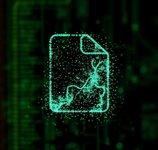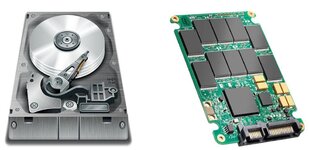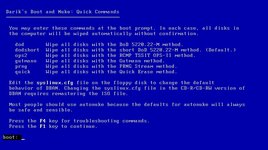- Joined
- 01.05.24
- Messages
- 252
- Reaction score
- 5,984
- Points
- 93
Being able to securely delete files that are no longer wanted or needed is an important aspect of computer security. If your device is fully encrypted, this is less of a concern as no files, deleted or otherwise, will be recovered from your device as long as your password remains uncompromised. You may still desire to sanitize a computer prior to reselling, donating, gifting it, or trashing it, and if you do not have full-disk encryption thorough deletion is especially important. You may just prefer to know everything is gone once it has been deleted, as I do.
First, it is important to understand that there are two types of memory in a computer. The first and most commonly referenced is non-volatile and is technically referred to as “storage”. This is computer’s hard drive and it contains
data that is intended to be saved permanently. The other type of memory (which is correctly called “memory”) is Random Access Memory (RAM). RAM is
considered volatile memory, or memory that dissipates and is lost when the computer is shut down.
A computer’s RAM is used to store temporary files, open programs, open files for use in on-the-fly encryption applications like VeraCrypt, run virtual machines, and a host of other things for which some short-term storage is needed. Fortunately, the data contained in RAM is typically unrecoverable within a few moments of the
computer being shut down. Under certain conditions (typically very cold conditions) the information in RAM can be recovered hours later but this requires a very sophisticated (and expensive) attack. Because of this, I worry very little about what is stored temporarily in RAM. Under normal room temperatures, if you remain with your device for an hour after shut down, the chances of any data
being recovered from it is vanishingly small.
I am much more concerned, however, with the security of the information that is stored on a computer’s hard drive. The storage in a hard disk drive (HDD) or SSD is
persistent by design – it is where files are saved and intended to be stored for hours, weeks, or years. Unfortunately, this information can also be difficult to get rid of when it is no longer needed or wanted. When using most operating systems the most common way of deleting a file is to select it and hit the Delete key which sends the file to the Recycle Bin or Trash. When the Recycle Bin or Trash is emptied the file is presumed to be gone forever.
Unfortunately, this does not actually remove the file from the hard drive. Deleting a file in this manner simply removes the information that the operating system uses to locate it. The operating system then allocates the space on the hard drive where the file resides as “free space”. The file is still totally intact on the hard drive until it is overwritten with new information. Though it would not seem like it, it can take an extremely long time for the entire file to actually be overwritten. In
the meantime, as long as the file remain intact it is easily recovered from your hard drive, even by a novice.
Before we move further into this discussion it is important to note that erasure techniques do not work as well when permanently removing
individual files on solid-state drives (SSDs). SSDs store data in an entirely different
manner than traditional spinning-disk HDDs, and in a way that does not lend itself
to easy and effective overwriting of individual files. This is not to suggest that
secure file deletion applications are entirely ineffective, but merely that they are less effective and will likely leave some percentage of any given file on the disk in recoverable state. While individual files are difficult to fully delete, a full wipe of SSDs will work as well as one conducted on an HDD. If you have a device with an
SSD, full-disk encryption is your primary means of data erasure. Though I do not wish to downplay the importance of FDE for all computer users, it is especially important for SSD users.
If you have reached the end of your relationship with a computer or its hard drive
and wish to ensure that nothing whatsoever will be recovered from it, I recommend using Darik’s Boot and Nuke (DBAN). DBAN is technically a bootable
operating system that, upon startup, will wipe your entire hard drive completely. It
is truly the “nuclear option”, and one that should be used sparingly, as nothing will
be left on your hard drive. No files, no applications, no settings or operating system – nothing. To use DBAN, download the bootable file and burn the .iso to a disk. You must burn it as a bootable disk.
When the disk has finished burning, insert it into the optical drive of the target machine and boot from the disk. DBAN is free and available at
dban.org.
First, it is important to understand that there are two types of memory in a computer. The first and most commonly referenced is non-volatile and is technically referred to as “storage”. This is computer’s hard drive and it contains
data that is intended to be saved permanently. The other type of memory (which is correctly called “memory”) is Random Access Memory (RAM). RAM is
considered volatile memory, or memory that dissipates and is lost when the computer is shut down.
A computer’s RAM is used to store temporary files, open programs, open files for use in on-the-fly encryption applications like VeraCrypt, run virtual machines, and a host of other things for which some short-term storage is needed. Fortunately, the data contained in RAM is typically unrecoverable within a few moments of the
computer being shut down. Under certain conditions (typically very cold conditions) the information in RAM can be recovered hours later but this requires a very sophisticated (and expensive) attack. Because of this, I worry very little about what is stored temporarily in RAM. Under normal room temperatures, if you remain with your device for an hour after shut down, the chances of any data
being recovered from it is vanishingly small.
I am much more concerned, however, with the security of the information that is stored on a computer’s hard drive. The storage in a hard disk drive (HDD) or SSD is
persistent by design – it is where files are saved and intended to be stored for hours, weeks, or years. Unfortunately, this information can also be difficult to get rid of when it is no longer needed or wanted. When using most operating systems the most common way of deleting a file is to select it and hit the Delete key which sends the file to the Recycle Bin or Trash. When the Recycle Bin or Trash is emptied the file is presumed to be gone forever.
Unfortunately, this does not actually remove the file from the hard drive. Deleting a file in this manner simply removes the information that the operating system uses to locate it. The operating system then allocates the space on the hard drive where the file resides as “free space”. The file is still totally intact on the hard drive until it is overwritten with new information. Though it would not seem like it, it can take an extremely long time for the entire file to actually be overwritten. In
the meantime, as long as the file remain intact it is easily recovered from your hard drive, even by a novice.
Before we move further into this discussion it is important to note that erasure techniques do not work as well when permanently removing
individual files on solid-state drives (SSDs). SSDs store data in an entirely different
manner than traditional spinning-disk HDDs, and in a way that does not lend itself
to easy and effective overwriting of individual files. This is not to suggest that
secure file deletion applications are entirely ineffective, but merely that they are less effective and will likely leave some percentage of any given file on the disk in recoverable state. While individual files are difficult to fully delete, a full wipe of SSDs will work as well as one conducted on an HDD. If you have a device with an
SSD, full-disk encryption is your primary means of data erasure. Though I do not wish to downplay the importance of FDE for all computer users, it is especially important for SSD users.
QUBES OS SECURE FILE DELETION
In Qubes, to securely delete a file, you can simply run this command on any VM, for any file.
shred -u filename.extension
Example: shred -u message.txt or shred -u folder.zip
If you have reached the end of your relationship with a computer or its hard drive
and wish to ensure that nothing whatsoever will be recovered from it, I recommend using Darik’s Boot and Nuke (DBAN). DBAN is technically a bootable
operating system that, upon startup, will wipe your entire hard drive completely. It
is truly the “nuclear option”, and one that should be used sparingly, as nothing will
be left on your hard drive. No files, no applications, no settings or operating system – nothing. To use DBAN, download the bootable file and burn the .iso to a disk. You must burn it as a bootable disk.
When the disk has finished burning, insert it into the optical drive of the target machine and boot from the disk. DBAN is free and available at
dban.org.
CONCLUSION
This brings us to the end of the secure file deletion topic.ALL THE BEST!







